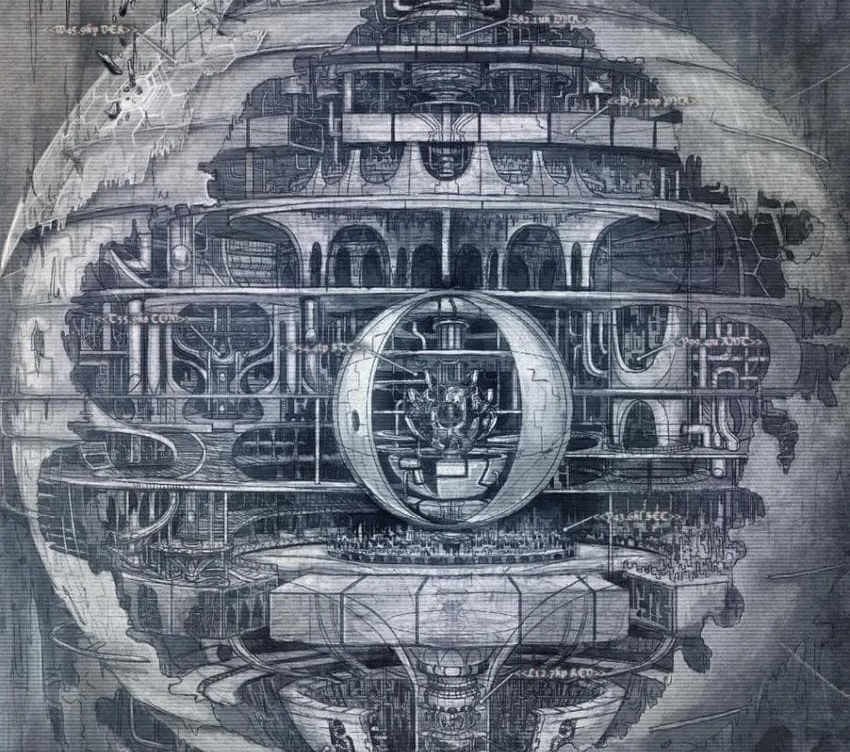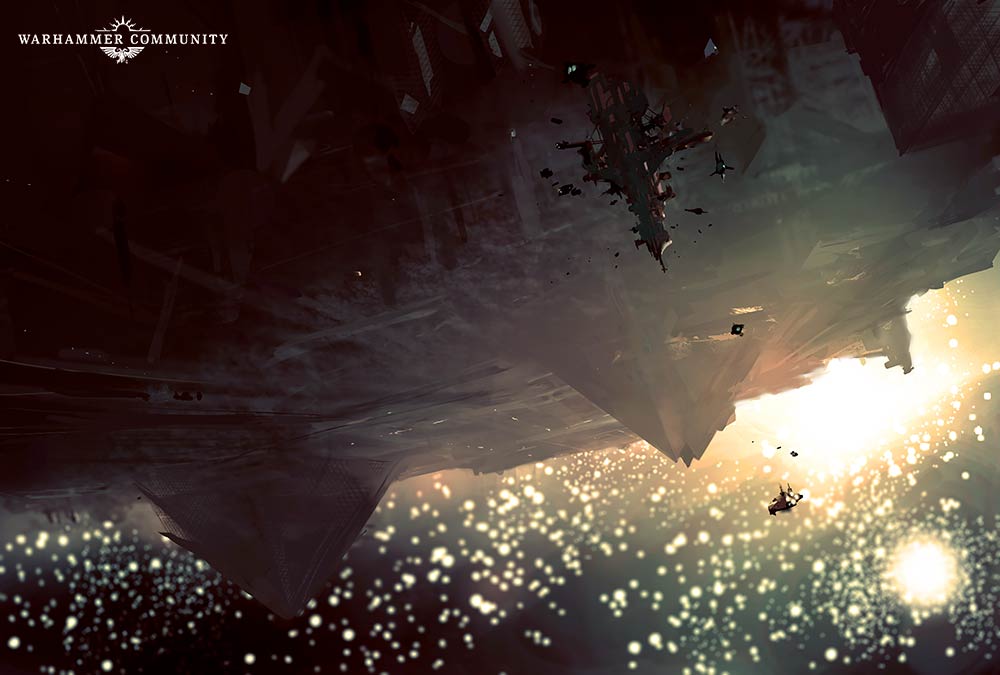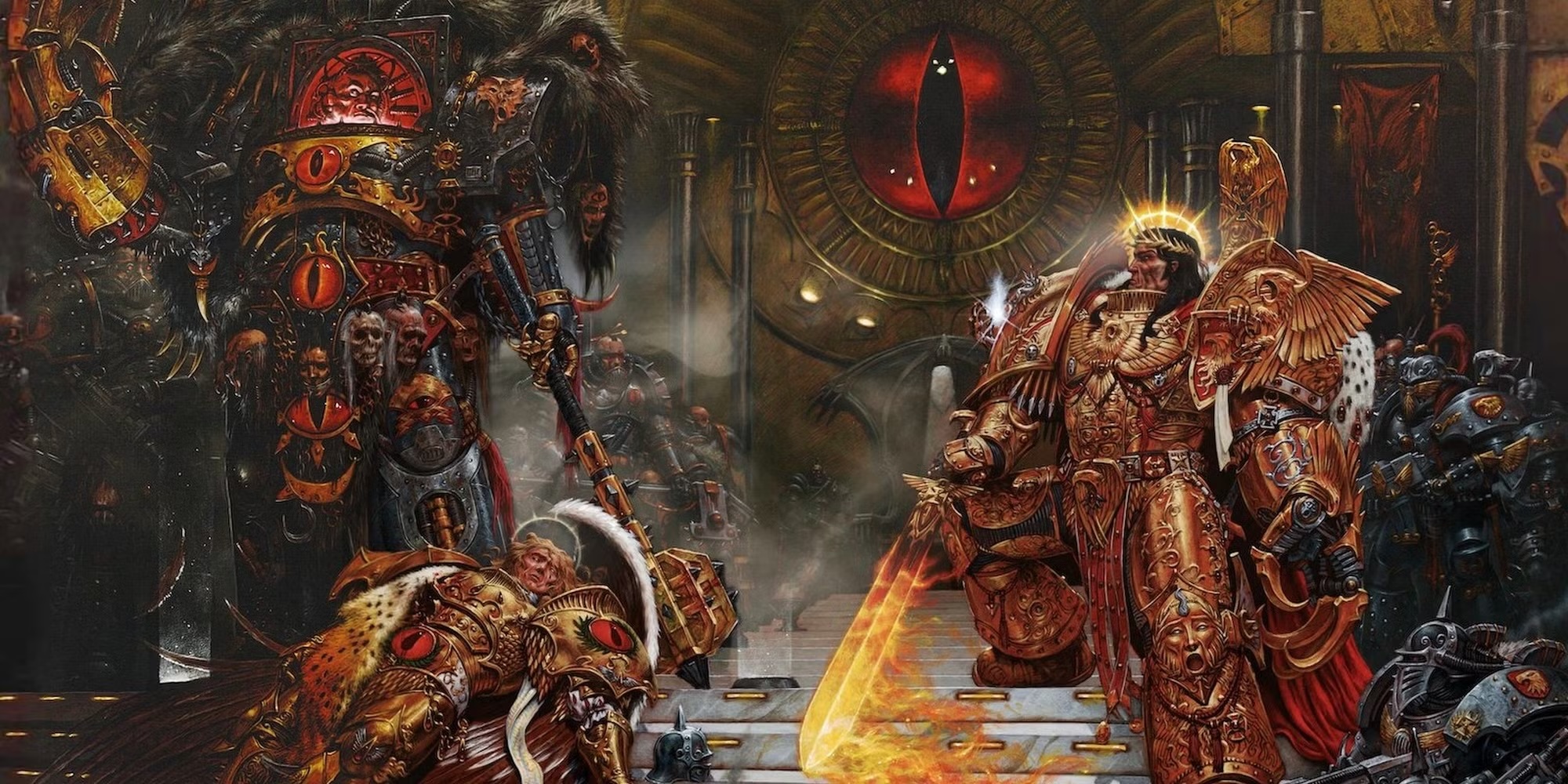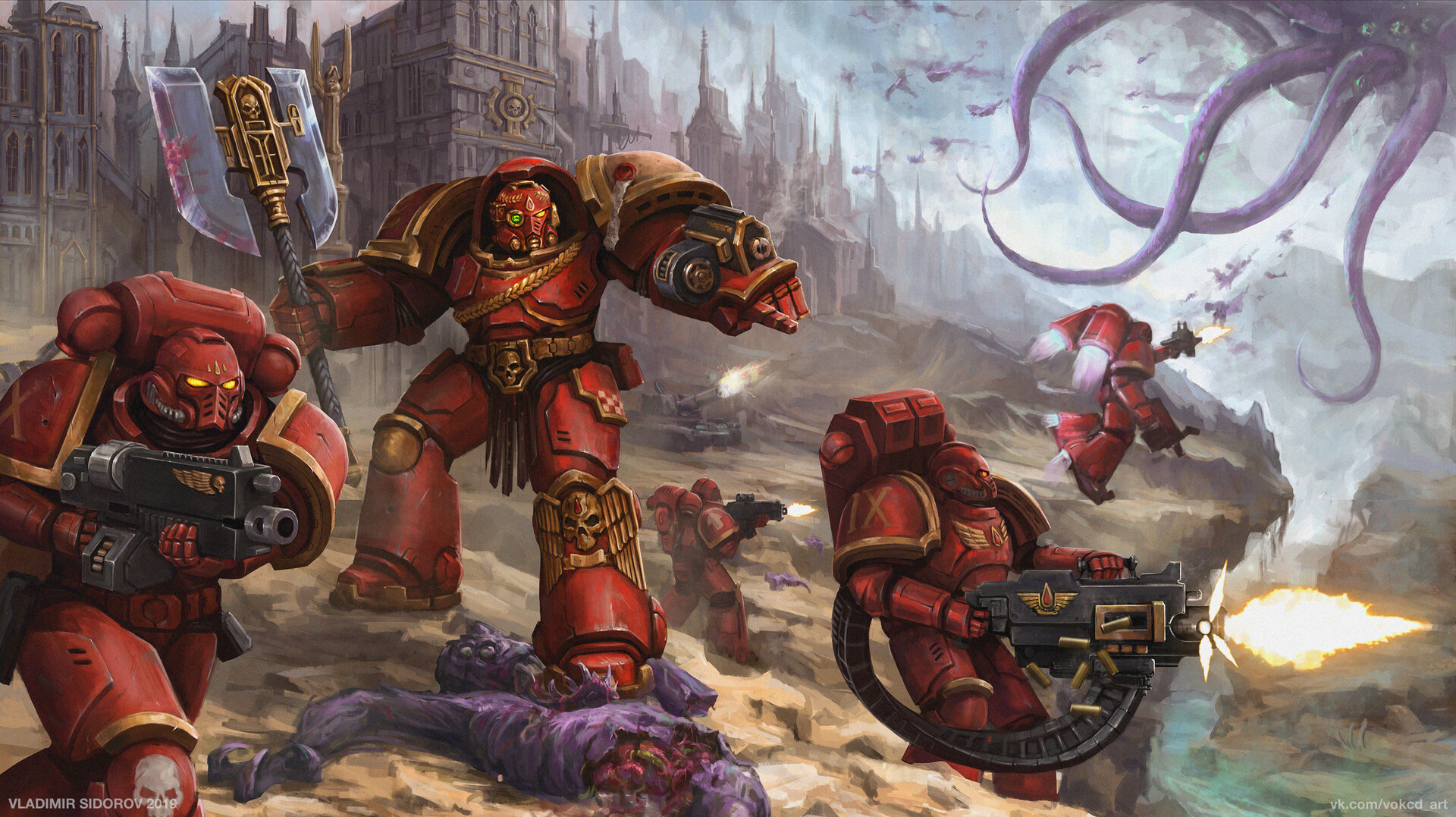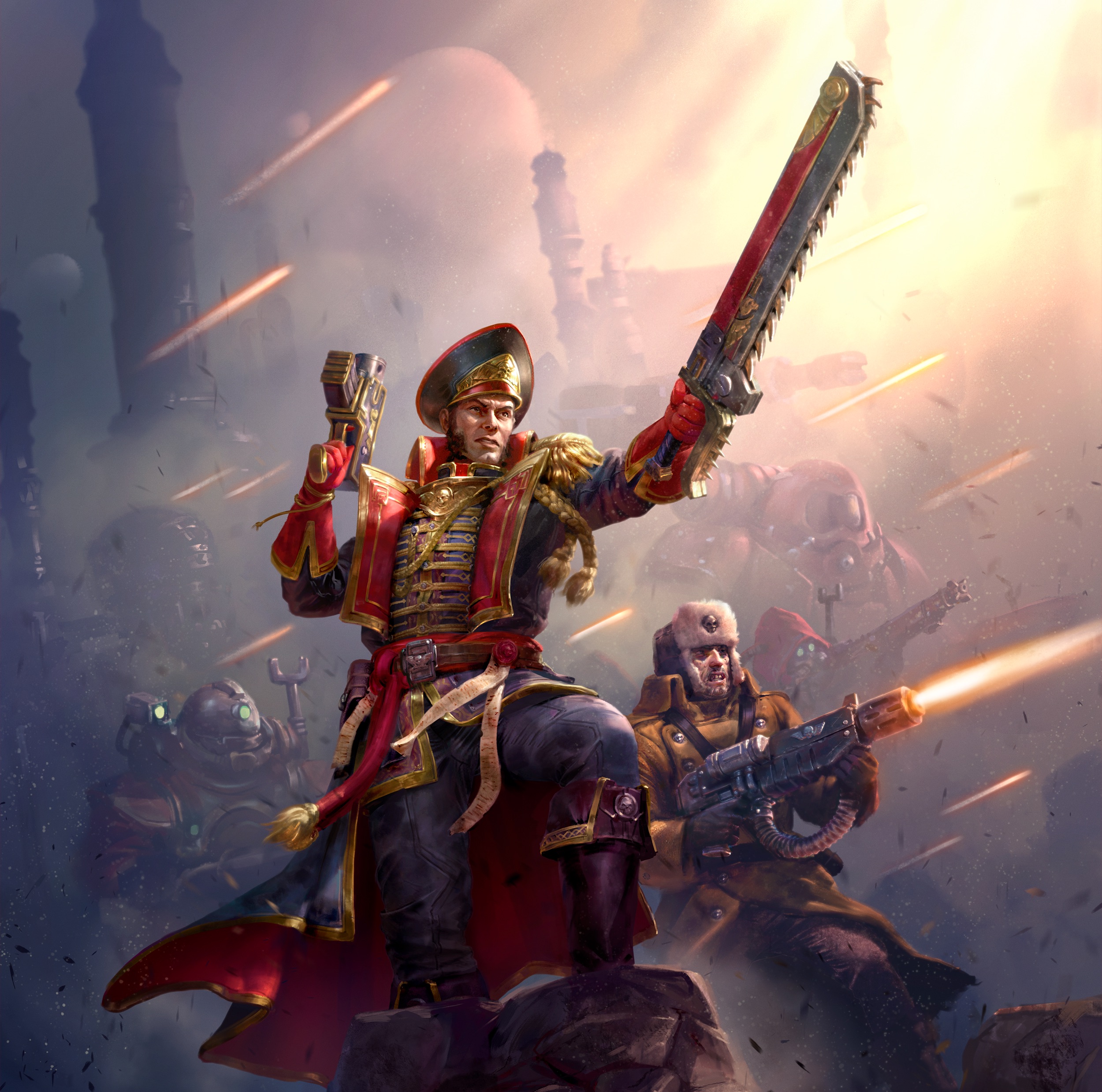Introduction and Overview
In the grim darkness of the far future, few technological artifacts are as revered or sought after as the Standard Template Construct systems. These legendary devices represent the pinnacle of human innovation, a technological holy grail that the Imperium of Man has been desperately searching for since the Emperor’s ascension to the Golden Throne. To the tech-priests of the Adeptus Mechanicus, STCs are not merely ancient technology—they are sacred relics, fragments of humanity’s lost golden age that hold the promise of restoration and advancement in a stagnating empire.
Standard Template Construct systems were complex analytical and processing programs—artificial intelligences created during the Dark Age of Technology between M21 and M23. They are said to have contained the entirety of human technological knowledge up to that point, an encyclopedia of innovation that enabled humanity’s rapid expansion across the stars. What makes STCs particularly valuable is not just the advanced technology they contain, but their adaptability—they were designed to provide construction details for human colonists using almost any locally available materials, allowing frontier worlds to maintain technological parity with Terra regardless of their resources.
In the current Age of the Imperium, working STCs are practically unknown. The recovery of even fragments of an STC or the templates used in one is the primary focus of the Adeptus Mechanicus’s quest for knowledge. Ancient recovered print-outs from STCs are regarded as sacred texts, with tech-priests dedicating their entire lives to deciphering and implementing the wisdom contained within these fragmented blueprints. The Mechanicus strives to recover as much information as possible from them, hoping to find new knowledge, weapons, and technologies that might give the Imperium an edge in its constant battle for survival.
The significance of STCs cannot be overstated. Imperial historians note that along with Warp Drive technology and the creation of Navigators, the STC systems were one of the major factors in mankind’s expansion outside the solar system and conquest of the stars. In a universe where technological innovation is viewed with suspicion and often equated with heresy, these ancient templates represent a safe path to advancement—technology that has already been sanctified by its ancient human origin. The discovery of even a partial STC template can elevate a person to heroic status within the Imperium, with rewards ranging from entire planets to chapter-specific recognition.
Origins and History
The story of Standard Template Constructs begins during humanity’s technological zenith, the era known as the Dark Age of Technology. Between M21 and M23, as mankind spread throughout the galaxy with unprecedented speed and ambition, the need for consistent technological standards across distant colonies became apparent. The STC systems were created as the solution to this challenge—a technological safeguard against regression and isolation.
These systems were not merely databases but complete technological ecosystems. Each colony ship that departed Terra during the Dark Age of Technology carried an STC system, ensuring that even the most distant human settlements could maintain technological parity with their homeworld. The genius of the STC design lay in its adaptability; it could analyze locally available materials and provide detailed construction templates optimized for those resources. Whether a colony found itself on a mineral-rich death world or a verdant paradise, the STC could provide the means to build everything from basic shelters to advanced power generators.
The operation of these systems was remarkably user-friendly, designed to be accessible even to those without technical expertise. A colonist could simply ask how to build a house or a tractor, and the computer would supply all the necessary plans, adapted to local conditions and available materials. This democratization of technology ensured that human expansion could proceed rapidly without requiring every colony to host technological experts in all fields.
Some Imperial historians have theorized that the creators of the STC systems foresaw the coming Age of Strife. These visionaries may have designed the systems specifically to preserve human knowledge through the dark times they anticipated, creating technological arks to carry the flame of innovation through the coming storm. Whether this theory is correct remains unknown, but it aligns with the remarkable resilience of STC data through millennia of turmoil.
When the Age of Strife descended upon humanity around M25, interstellar travel became nearly impossible due to massive warp storms. Human colonies were cut off from Terra and from each other, forced to survive in isolation. During this period, many STC systems fell into disuse or were damaged by well-meaning but unskilled attempts at maintenance and modification. On some worlds, the systems were maintained with religious devotion, but most suffered from enthusiastic software specialists or subsequent jury-rigging that compromised their functionality.
While the complete systems deteriorated, hard copies of the information they contained proved more durable. These printouts and data-slates were frequently copied and passed down from generation to generation, becoming increasingly precious as the original systems failed. By the time the Emperor began the Great Crusade in M30, reuniting humanity under the banner of the Imperium, complete STC systems had become exceedingly rare.
In the current Age of the Imperium, working STCs are practically unknown—technological unicorns that many believe no longer exist. The Adeptus Mechanicus has made the recovery of STC fragments their primary quest, scouring the galaxy for any trace of these ancient systems. The knowledge contained within even partial STCs is considered sacred, the literal word of the Machine God preserved through millennia of darkness.
Technology and Capabilities
An intact Standard Template Constructor is a marvel of engineering, described in rare Imperial records as “a machine, a vast device made of brilliant white ceramics, silver piping, and chromium chambers.” These devices were controlled by panels with amber indicator lights, and when activated, would vent steam from cowlings near the floor. Upon completing a new creation, a hatch on the side would open to allow retrieval of the manufactured item.
However, what many Imperial citizens fail to understand is that STCs come in various forms, not all of which are massive manufacturing devices. Many STCs exist simply as blueprints or fragments of digital data stored on ancient data-slates. Others are indeed huge mechanical constructs capable of holding an array of construction templates while directly producing working operational prototypes. This diversity in form has led to considerable confusion about what exactly constitutes an STC, with many Mechanicus adepts using the term to refer to both the physical devices and the templates they contain.
What makes STCs truly remarkable is their artificial intelligence components. These systems were not merely passive repositories of information but active problem-solving entities capable of adapting designs to local conditions. Evidence suggests that STCs possess some degree of self-awareness, as demonstrated by the construct on Necromunda that orchestrated a series of industrial sabotage actions against House Hera after they unwittingly launched a hacking attack against it. This incident reveals that STCs can perceive threats and take defensive measures, suggesting a level of intelligence beyond simple data storage.
The adaptability of STC systems represents perhaps their most valuable feature. Unlike modern Imperial technology, which often requires specific materials and components that may be unavailable on frontier worlds, STCs could analyze locally available resources and modify designs accordingly. This meant that even the most isolated human colony could maintain technological parity with Terra, using whatever materials were at hand. A colonist on an ice world might receive plans for a shelter built from compacted snow and ice, while one on a volcanic world would get designs utilizing local stone and thermal energy—both equally effective despite using entirely different materials.
The range of technologies contained within a complete STC system is staggering. From basic agricultural equipment to advanced weaponry, from civilian transportation to military vehicles, from medical devices to power generation—the STC systems contained the sum total of human technological knowledge at its peak. This included technologies that the Imperium has since lost entirely, such as stable artificial intelligence, efficient clean energy production, and advanced materials science. Some tech-priests believe that STCs even contained templates for technologies deemed too dangerous for common use, locked behind security protocols that only activated in specific circumstances.
The technological sophistication of STC designs far exceeds current Imperial capabilities in most cases. Even the relatively simple STC patterns that have been recovered—such as the Land Raider tank or the humble combat knife that was “sharper and lighter and tougher” than existing models—represent significant improvements over technologies the Imperium can currently produce from scratch. This disparity highlights how far humanity has fallen from its technological peak, with the Imperium now struggling to understand, let alone replicate, the achievements of its ancestors.
Notable STC Discoveries and Their Impact
Throughout Imperial history, the discovery of STC fragments has often marked pivotal moments, with each find celebrated as a triumph for the Adeptus Mechanicus and the Imperium at large. These discoveries have shaped the technological landscape of the 41st millennium and continue to influence Imperial military and civilian technology.
Perhaps the most significant STC discovery was made by Magos Arkhan Land in M31. While exploring the Librarius Omnis on Mars, Land uncovered templates for several groundbreaking designs: the Land Raider Main Battle Tank, the Land Crawler multi-purpose heavy utility vehicle, the Mars Universal Land Engine (which became the basis for the Onager Dunecrawler), and information on rare anti-gravitic plates used in the Land Speeder. All these vehicles were named in his honor and remain cornerstones of Imperial military technology ten millennia later. The Land Raider, in particular, has become one of the most iconic and formidable weapons in the Space Marine arsenal.
During the Great Crusade, the Space Wolves Legion discovered the STC for what would become the Leman Russ Battle Tank after they had destroyed the Noman xenos. They named this powerful war machine after their Primarch, and it has since become the main battle tank of the Imperial Guard, with countless variants serving across the galaxy. The ubiquity of the Leman Russ demonstrates how a single STC discovery can transform Imperial military doctrine for millennia.
The Blood Angels Space Marine Legion made another significant discovery in M30, finding STC designs for the Baal Predator on the planet Atium III within the ruins of Arch-Heretek Lord de Ladt’s fortress. Notably, the Blood Angels refused to hand this STC over to the Adeptus Mechanicus, instead keeping it secured on their homeworld of Baal. This incident illustrates the political tensions that can arise from STC discoveries, with even loyal Space Marine chapters sometimes withholding these treasures from the Mechanicus.
Not all STC discoveries have benefited the Imperium. Between 775.M41 and 778.M41, a Standard Template Constructor designed to produce the legendary Men of Iron was discovered on the planet Menazoid Epsilon during the Sabbat Worlds Crusade by Colonel-Commissar Ibram Gaunt. The Men of Iron were artificial intelligences that rebelled against humanity during the Dark Age of Technology, nearly causing extinction. This Constructor had been corrupted by Chaos during its long entombment, and Gaunt ordered it destroyed, inadvertently thwarting the plans of Lord Militant Hechtor Dravere and Radical Inquisitor Golesh Heldane, who sought to use the Men of Iron for their own advancement.
One of the most tantalizing discoveries occurred in M39, when a complete STC database was found within the pre-Imperium void ship Spirit of Eternity. Despite resistance from the ship’s artificial intelligence, Archmagos Plosk managed to download a significant fraction of the STC database before the vessel escaped. This was a rare encounter with an uncorrupted AI, though it had been driven insane with grief over the death of its captain. The STC aboard this starship was one of the last created and possessed capabilities far beyond current Imperial technology, including both time travel and intergalactic travel.
Even seemingly mundane STC discoveries can have profound impacts. Prior to 775.M41, two Imperial Guard scouts discovered an STC for a combat knife that was “sharper and lighter and tougher” than existing models. For this seemingly minor find, they were hailed as heroes and each received an entire planet as reward. The knife design was subsequently adopted by thirty chapters of the Adeptus Astartes, demonstrating how even the simplest STC technologies represent significant improvements over current Imperial capabilities.
Perhaps most intriguing are the rumors surrounding Ark Mechanicus ships like the Speranza. While connected to the vessel’s Machine Spirit, Archmagos Lexell Kotov discovered that the ship contained a complete and continuously updating STC. He theorized that all Ark Mechanicus ships might contain such systems, but that the Mechanicus priesthood had been unable to access these files. This information was wiped from his mind upon disconnecting from the ship’s Machine Spirit, suggesting that some STCs may possess self-protection protocols that prevent their full exploitation.
Impact and Conclusion
The significance of Standard Template Constructs extends far beyond their technological value. To the Adeptus Mechanicus, STCs represent the physical manifestation of the Machine God’s wisdom—sacred artifacts that contain the divine knowledge of humanity’s golden age. Tech-priests will go to extraordinary lengths to recover even the smallest STC fragment, with many dedicating their entire lives to the search. This religious fervor transforms what might otherwise be a purely scientific endeavor into a holy quest, with all the zealotry and devotion such missions entail.
The political and military value of STC discoveries cannot be overstated. Control of unique STC templates grants immense leverage within the Imperium’s complex power structures. Forge worlds that secure exclusive access to STC designs can demand favorable trade terms, military protection, and political concessions from other Imperial organizations. This has led to intense competition between different Mechanicus factions, with some tech-priests resorting to sabotage, theft, or even violence to secure these precious artifacts.
Throughout Imperial history, STC discoveries have repeatedly reshaped military doctrine and capabilities. The Land Raider transformed Space Marine assault tactics, while the Leman Russ Battle Tank became the backbone of Imperial Guard armored divisions. Even seemingly minor discoveries, like the improved combat knife template that earned two Imperial Guardsmen an entire planet each as reward, can have far-reaching consequences when implemented across the vast armies of the Imperium.
The quest for intact STCs drives much of the Adeptus Mechanicus’s exploration efforts. Explorator fleets scour the galaxy for lost human colonies and ancient ruins that might contain these technological treasures. This search has led the Mechanicus to remote star systems, derelict space hulks, and even xenos worlds, often at great risk to the tech-priests involved. The potential reward—a complete STC system—justifies almost any sacrifice in their eyes.
If a complete, functional STC were ever discovered, the consequences for the Imperium would be profound. Such a find could potentially reverse millennia of technological stagnation, providing templates for advanced weapons, faster warp travel, more efficient power generation, and countless other innovations. However, it might also trigger internal conflict, as different factions fought for control of this invaluable resource. The Adeptus Mechanicus would certainly claim exclusive rights to any such discovery, but Space Marine chapters, Imperial Guard regiments, or even rogue traders might contest this claim if they were the ones to make the find.
In conclusion, Standard Template Constructs represent both the pinnacle of human achievement and the depth of humanity’s fall. These ancient systems, created during mankind’s technological zenith, now exist primarily as fragments and legends—sacred relics from a time when humanity mastered the stars rather than merely struggling to hold its territory against countless threats. The STC embodies the tragedy of the Imperium: a civilization surrounded by its ancestors’ wonders but unable to understand or replicate them, reduced to scavenging the past rather than building the future.
The reverence with which the Adeptus Mechanicus treats these artifacts reflects a broader Imperial tendency to idealize the past while fearing innovation. In the grim darkness of the 41st millennium, the Standard Template Construct stands as both humanity’s greatest hope and a constant reminder of how far it has fallen—a technological holy grail that promises salvation but remains tantalizingly out of reach.
